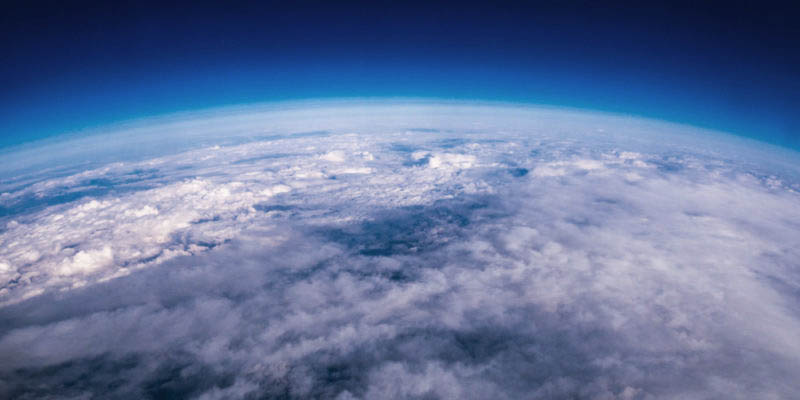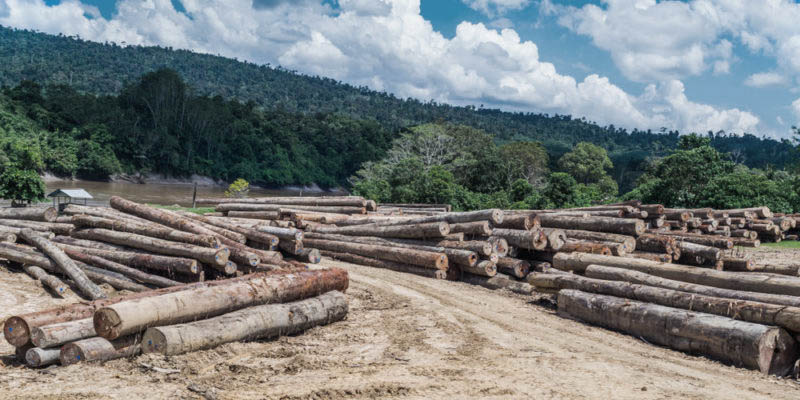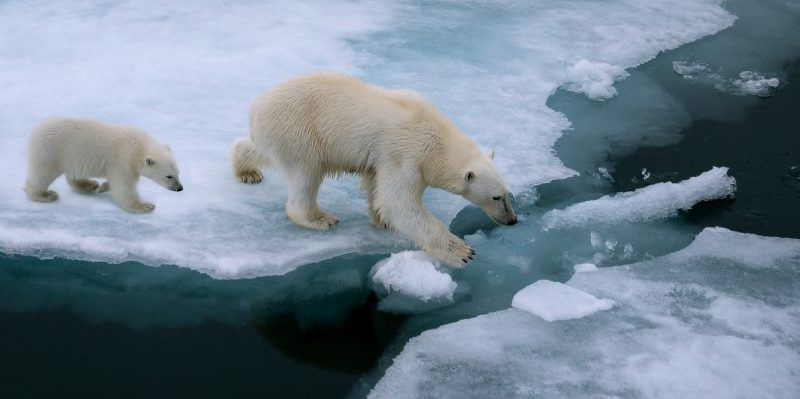We explain what the greenhouse effect is, and explore its causes and effects. In addition, we discuss its characteristics and possible solutions.

What is the greenhouse effect?
The greenhouse effect is a natural process occurring in Earth's atmosphere through which certain gases (such as carbon dioxide, methane, and water vapor) trap the Sun's heat and retain it near the surface.
This effect, which is similar to that produced by greenhouses in agriculture, makes Earth's temperature suitable for the development of life.
In recent decades, however, human activity has led to a significant increase in greenhouse gas emissions. This excess of greenhouse gases is believed to be causing the rise in the average temperature of the atmosphere, which in turn produces serious effects on climate, biodiversity, and life on the planet.
KEY POINTS
- It is a natural process occurring in the planet's atmosphere that is necessary for the development of life on Earth.
- It consists of the accumulation of gases in the atmosphere that are capable of trapping the Sun’s heat.
- The excessive accumulation of gases creates an imbalance in the greenhouse effect, resulting in more heat being trapped in the atmosphere.
- The imbalance of the greenhouse effect is caused by human activity, like excessive burning of fossil fuels, and the decrease in forest areas due to indiscriminate deforestation, among others.
- See also: Ecological footprint
Why is the atmosphere important?

A greenhouse is a structure that allows the Sun's heat to enter but, due to the lack of ventilation, prevents it from escaping. Greenhouses are used for growing vegetables that require high temperatures and humidity levels.
Earth's atmosphere produces the same effect, allowing the Sun's rays to reach Earth's surface, but then partially trapping its heat. Because the atmosphere works like a greenhouse, life can develop on Earth’s surface, which requires a minimum temperature to thrive.
If greenhouse gases did not trap heat, it is believed the planet’s average temperature would be 30 degrees lower than it is today.
Causes of the rising greenhouse effect

The greenhouse effect produced by human activity is caused by an excess of greenhouse gas emissions (mainly carbon dioxide, methane, and water vapor) into the atmosphere.
The burning of fossil fuels such as oil, gas, and coal releases carbon dioxide into the atmosphere. The use of fossil fuels for energy production, transportation, and industry are the main causes for the emission of these types of gases.
Greenhouse gases in the atmosphere increased rapidly since the mid-18th century, when the Second Industrial Revolution began to accelerate and deepen.
Furthermore, the growth of deforestation worldwide also accounts for the increase in the concentration of greenhouse gases in the atmosphere. Trees capture carbon dioxide and convert it into oxygen through photosynthesis. The decrease in forest areas across the world reduces the uptake of carbon dioxide, causing this gas to remain longer in the atmosphere.
The concentration of other greenhouse gases has also increased in recent years. Methane, for example, is produced from livestock farming through animal feces and poor waste management which, when decomposed, releases this gas that accumulates in the atmosphere.
Effects of the rising greenhouse effect

The direct consequence of the rising greenhouse effect is global climate change, which in turn produces a series of ecological and environmental effects. Among the most significant are:
- Changes in rainfall patterns. Climate change has altered precipitation patterns worldwide, leading to more frequent and intense floods and droughts in different regions across the globe.
- Changes in ecosystems. Climate change has caused severe ecological changes, including the loss of biodiversity and the extinction of numerous species.
- Rising ocean temperatures. Climate change affects marine life and aquatic ecosystems. In addition, it favors the increase in the frequency and intensity of extreme weather events feeding on warm water, such as hurricanes and tropical storms.
- Deterioration of human health. Climate change impacts human health through air pollution, exposure to high temperatures and heat waves, water scarcity, floods, and disease transmission, among other causes.
Greenhouse gases

The main greenhouse gas is water vapor. The second most important is carbon dioxide, despite accounting for a minimum percentage in the atmosphere (only 0.035%, meaning that for every million particles, only 350 are carbon dioxide). Any variation in the amount of this gas in the atmosphere has a profound impact on the greenhouse effect, since a small amount added may bring about significant consequences.
The Intergovernmental Panel on Climate Change (IPCC) estimates that approximately 50% of carbon dioxide emissions will remain in the atmosphere for several decades, with about 20% remaining for several thousand years. These percentages may vary depending on atmospheric conditions and on how these emissions are emitted and absorbed.
Earth's energy balance
Incoming solar energy plus the energy radiated by the Earth form the planet's energy balance. This must be in balance to maintain average temperature at stable values.
How much radiation does the Earth receive?
Solar energy reaches the Earth in the form of sunlight and heat. The incoming energy from the Sun is 341 watts per square meter, which is shortwave radiation. Part of that energy is trapped in the atmosphere (157 Watts) and another part reaches Earth's surface (184 watts).
How much radiation does the Earth emit?
The Earth not only receives but also radiates heat. The heat radiated by the Earth's surface annually is 396 watts per square meter, which is infrared radiation.
This heat is also partially absorbed by greenhouse gases and is radiated back to Earth's surface.
Reflected radiation

Both the Earth's surface and the atmosphere reflect part of the incoming energy from the Sun, meaning that energy does not remain in the atmosphere but is dispersed out of it. The total amount of energy reflected by both the Earth's surface and the atmosphere is 102 watts per square meter, which is less than one third of the incoming radiation from the Sun.
Light-colored objects, such as snow or clouds, reflect the most energy. Darker objects, like forests, absorb it.
A portion of the infrared radiation emitted by the Earth's surface is not absorbed by greenhouse gases, passing through the atmosphere and dispersing into space.
How to reduce the effects of climate change

To reduce greenhouse gas emissions and, therefore, mitigate the effects of climate change, several countries are seeking to replace fossil fuels with cleaner energy sources, such as solar, wind, or geothermal energy. Likewise, many companies are implementing more energy-efficient production and consumption measures.
In addition, efforts are being made in large cities to decrease pollution caused by transportation by promoting the use of public transport, electric vehicles, and bicycles.
International agreements on the greenhouse effect
Agreements have been signed by various countries to work together on climate change. Among the most important are:
- Kyoto Protocol (1997). It was the first international agreement on climate change. This treaty committed industrialized countries to reduce their greenhouse gas emissions below 1990 levels.
- Paris Agreement (2015). Through this agreement all countries committed to fight against the rise in global temperature to below 2°C above pre-industrial levels. It was agreed that countries would commit to reducing their greenhouse gas emissions every five years, a fund being established to help the most vulnerable countries in the face of climate change.
Explore next:
References
- Benavidez Ballesteros, H. y León Aristizábal, G. (2007). Información técnica sobre gases de efecto invernadero y cambio climático. IDEAM - METEO, 008.
- Goudie, A. (2009). El impacto humano en el clima: pasado, presente y futuro. Progreso en Geografía Física, p. 252-258.
- Hernández, Y (2020). Cambio climático: causas y consecuencias. Revista Renovat, 4. Sena
Was this information useful to you?
Yes NoThank you for visiting us :)